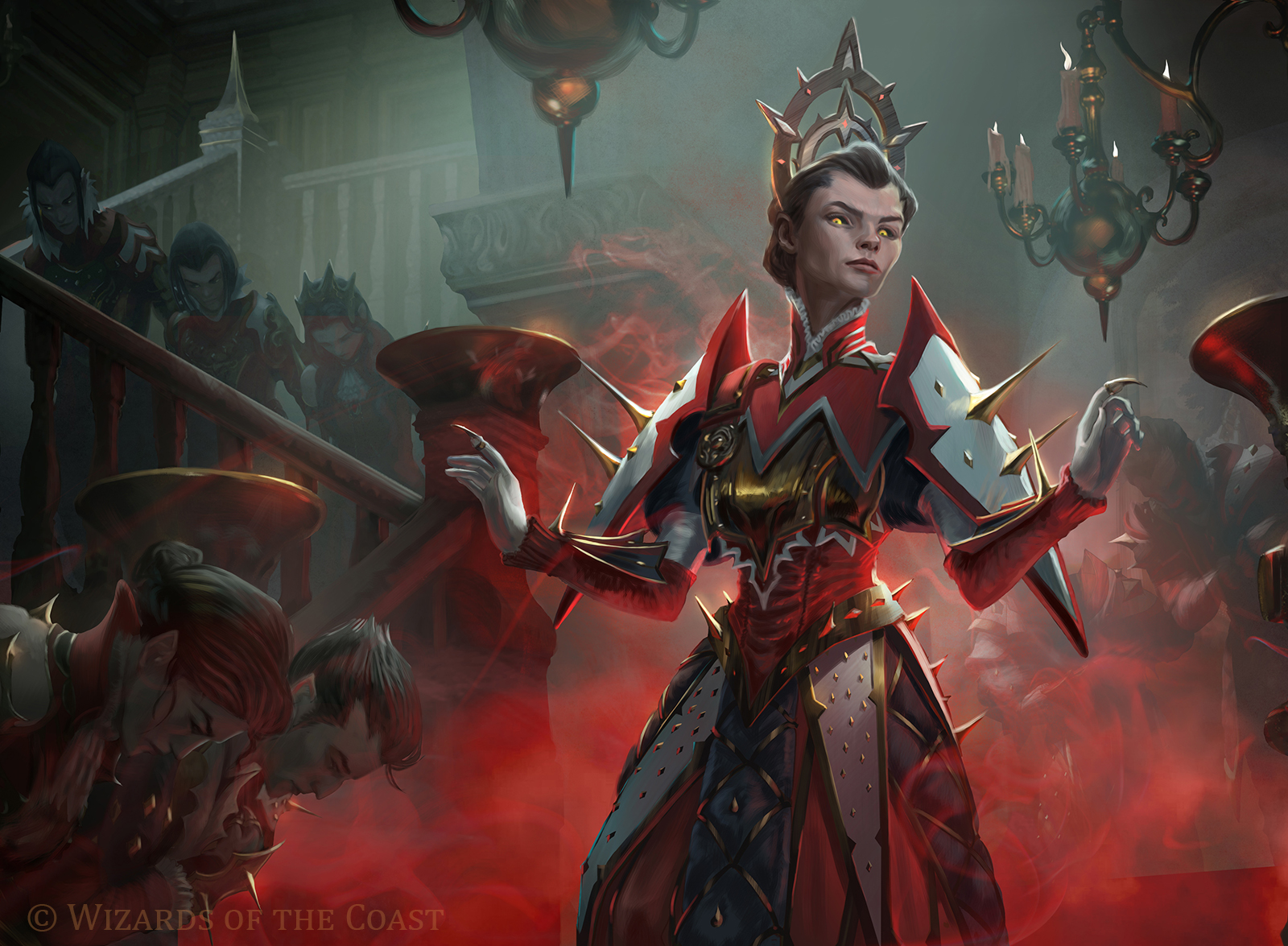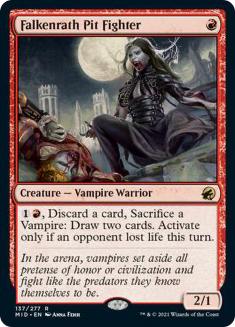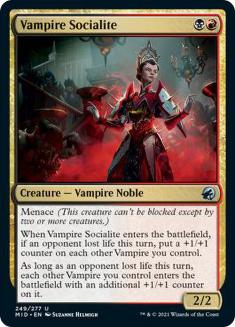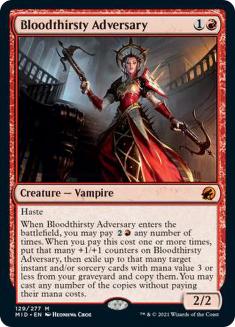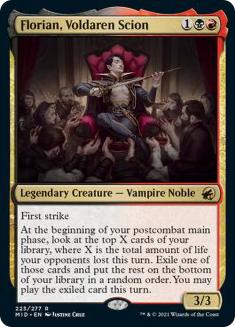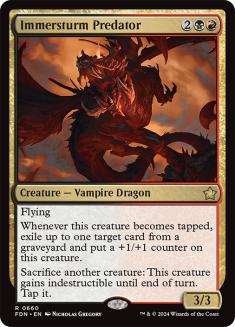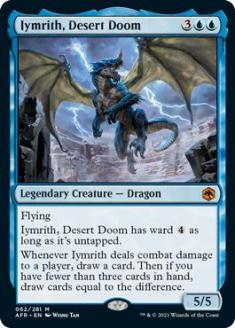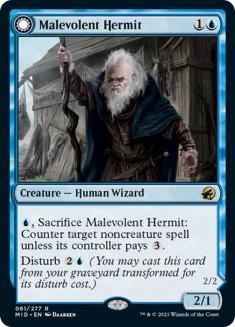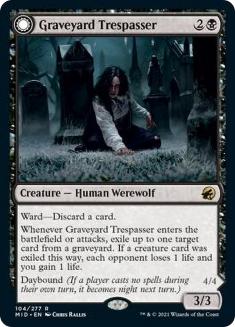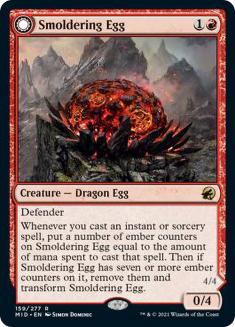As you may or may not know, the Magic World Championship XXVII happened last weekend. I ended up playing Mono-Green Aggro❄, which wasn’t the most inspired of choices, so today I’m going to talk about the rogue decks that I almost played at the event. All these decks were reasonably close for me, and I think with some improvements (whether a couple of cards I didn’t think of, a new set, or future bans) they could potentially get there. If anything, I hope they can at least serve as inspiration for the people who’re tired of the Izzet/Mono-Green metagame.
Deck #1: Rakdos Vampires
I was first introduced to Rakdos Vampires by a Tweet from Grzegorz Kowalski, who placed it as one of his Tier 1 decks in the format. At that point, I had never played with or against Vampires. In fact, I didn’t think Vampires was even a deck; weren’t they supposed to be a tribe in Innistrad: Crimson Vow only?
It turned out that, even though there aren’t many Vampire-synergy cards, a lot of the good Rakdos creatures happen to be Vampires, and when you aren’t paying a ton for your synergy, then it just becomes a welcome bonus. Here’s the deck we ended up with:
Creatures (26)
- 4 Immersturm Predator
- 4 Vampire Socialite
- 2 Tainted Adversary
- 4 Bloodthirsty Adversary
- 4 Falkenrath Pit Fighter
- 4 Reckless Stormseeker
- 4 Florian, Voldaren Scion
Lands (21)
Spells (13)

As far as Vampire synergies go, we have two cards — Falkenrath Pit Fighter and Vampire Socialite.
Falkenrath Pit Fighter is just minor synergy, so you’re really mostly using Vampire Socialite. On top of those two cards, Bloodthirsty Adversary; Florian, Voldaren Scion; and Immersturm Predator are all Vampires.
Florian, Voldaren Scion in particular is a card that I underestimated; its ability is actually incredibly strong, especially when you can pair it with cheap removal or cheap disruption. It’s not rare to cast Florian on Turn 4, attack them for a bunch, and have five chances to hit a Duress, for example (or the land to cast it).
There are several things I like about this deck, and the first of them is its ability to have aggressive starts. Turn 1 Falkenrath Pit Fighter into Turn 2 Vampire Socialite is almost comparable to Turn 1 Usher of the Fallen, Turn 2 Luminarch Aspirant, and I see that as the gold standard of starts for an aggressive deck nowadays.
After that, there’s Bloodthirsty Adversary . I wrote about Bloodthirsty Adversary a while ago and even picked it as one of the top five cards in the set, and decks like this are a big reason why. In this deck, you can make use of the Adversary as a 2/2 haste creature in your aggressive starts, or you can use it to flashback either a removal spell or a disruption spell. In Game 1s there isn’t that much disruption, but in Games 2 and 3 the Adversary becomes the best card in your deck in almost every matchup, because you’re always going to be able to get something devastating back — you can grind the creature decks with a lot of removal and you can stifle the control decks with all your disruption.
Then there are the creature-lands and modal DFCs. Almost every deck in Standard gets utility from its lands right now, so this is nothing new, but Agadeem’s Awakening is very powerful in this deck — much more so than in other builds it has been played in. There are several haste creatures in the deck (Reckless Stormseeker, Bloodthirsty Adversary), so you can kill your opponent out of nowhere with it, and Vampire Socialite means it’s not hard to get a lot of stats for six or seven mana.
In testing, this deck actually performed reasonably versus the Izzet decks, but it did not do well against Mono-Green Aggro❄, which was why we dismissed it. We had a plan of grinding them out with Adversaries and a ton of removal, and there is indeed a lot of very good removal, but cards like Esika’s Chariot and Ranger Class make that plan hard to accomplish.
We found out that the best way to beat Mono-Green was to aggro them out, and we didn’t have enough tools to do that. In retrospect only one other person chose Mono-Green (we expected a lot more of it), so maybe we should have worked more on this deck. You will see that “we dismissed it because it lost to Mono-Green” was a common feature among decks in this article.
With the release of Innistrad: Crimson Vow, this deck will almost certainly improve, as we’re bound to get more Vampires, more Vampire synergies, and just better Rakdos cards. I wouldn’t venture a guess as to what the deck is actually going to look like, but what this build is really looking for is another aggressive creature (preferably another good one-drop Vampire).
Deck #2: Mono-Blue Delver❄
This deck was given to us by Andrew Baeckstrom (BK), who was having a ton of success with it on ladder. We expected a lot of Izzet decks in the field, and going under them with a ton of counterspells seemed like it was going to be a viable plan. We had tried both Dimir and Izzet Delver decks in the past, but they always seemed like they were missing something, and the mana was never very good, so the prospect of playing a Mono-Blue version of the deck was appealing.
Creatures (14)
Lands (22)
Spells (24)

This is a tempo deck through and through. Your goal is to cast an early creature (any of them) and counter everything they cast while you attack with your creature and eventually kill them. Iymrith, Desert Doom is the big difference in this build from other Delver builds, and it’s a very good curve-topper that you can tap out for and then protect.
I’ve been a big fan of Iymrith, Desert Doom in other decks, but it has one main problem. Most of the time, it’s invulnerable the turn you cast it, but then, once you attack with it, they just kill or bounce it, because the Iymrith decks don’t have the tools to protect it. This deck has a thousand counterspells in it, so if it untaps with Iymrith, it can make sure that it actually connects. Then, once you do, you might actually draw two or three cards from it, because the deck is quite cheap (Teachings of the Archaics is very good here for the same reason).
Most tempo decks struggle if the opponent kills their early drops, since they just do stuff that doesn’t get them anywhere, but Iymrith can win the game even if your Turn 1 Delver of Secrets gets killed immediately, so its inclusion makes a big difference.
That said, there were a couple of downsides to this deck. First, it’s mono-blue and has Snow-Covered lands, so it’s not that easy to transform Delver of Secrets. I’ve seen Dimir builds, for example, that play upwards of ten modal DFCs, and we can realistically only play four. Second, it struggles a lot with the card Malevolent Hermit. This is a counterspells deck through and through, and there isn’t much you can sideboard versus a control deck that isn’t simply more counterspells (or your own Hermits), which means Malevolent Hermit is devastating (particularly its back side, which makes all noncreature spells uncounterable). Being a mono-blue deck, we can’t do much more than bounce it, which just resets it and lets them counter yet another spell.
I think the most important thing for this deck is finding a way to deal with the Hermit. If we can do that, then I’m going to be a lot more interested in it.
Deck #3: Mono-Black Zombies❄
After our near-miss with Rakdos Vampires, I started toying with the idea of playing Zombies instead of Vampires. This would give you two two-power one-drops instead of one (well, sort of two-power — usually much more on Champion of the Perished), which was something I really wanted to have access to. I tried building the deck and failed, so I abandoned it until I saw a version that did well in an event from Gonçalo Pinto. After some very small tweaks to the sideboard, this is what we arrived at:
Creatures (26)
- 2 Skyclave Shade
- 4 Dungeon Crawler
- 4 Ebondeath, Dracolich
- 4 Wight
- 4 Champion of the Perished
- 4 Graveyard Trespasser
- 4 Tainted Adversary
Lands (20)
Spells (14)

This deck contained the full four Duresses, and basically operated like the Mono-Black decks from Pioneer — just some disruption, removal, and creatures. It also has a lot of things I liked in the Vampires deck, such as the very large amount of utility lands, including very powerful Agadeem’s Awakening. You don’t get any haste creatures but Champion of the Perished really loves it.
The card that surprised me the most here, and the card I believe I was missing in my original version, was Graveyard Trespasser. I originally labeled it a Limited card in my mind, but it proved to be absolutely amazing against Izzet decks. It turns out that exiling their flashback cards for free comes up a lot, and forcing them to discard a card to target it when these decks are so reliant on bounce is massive. If anything fails, it’s a three-drop that basically attacks for four and sometimes attacks for six!
Graveyard Trespasser definitely overperformed and it’s a card I’ll be looking towards to beat Izzet decks down the line. We even considered adding it to our Rakdos Vampires deck, but that deck already has eight very good three-drops, so I’m not sure if it belongs.
The problem with this deck was Mono-Green Aggro❄. We felt it could hold its own versus Izzet after sideboarding, but it really struggled versus Esika’s Chariot and Blizzard Brawl. You need the flyers to push through the last points of damage and while Ebondeath, Dracolich is good, it’s not good enough.
Deck #4: Azorius Flyers
This was a deck that Zach’s girlfriend Fiona was winning a lot with on ladder, and when he sent us the list we were surprised at how well it performed. Of all the decks we had, it actually did the best versus Izzet Epiphany due to the combination of a fast clock and cheap disruption (Concerted Defense out of the sideboard was very strong). This is where we arrived after some tweaks to her version:
Creatures (32)
- 2 Skyclave Apparition
- 4 Luminarch Aspirant
- 4 Usher of the Fallen
- 3 Reidane, God of the Worthy
- 4 Battlefield Raptor
- 4 Elite Spellbinder
- 4 Spectral Adversary
- 4 Intrepid Adversary
- 3 Malevolent Hermit
Lands (22)
Spells (6)

Paladin Class was the star of this deck, basically acting as an Embercleave to close the game out with a flyer. On top of that, the mana tax it required was actually quite good versus Izzet decks, even if you didn’t level it up. This deck was relatively similar to the Azorius Aggro deck by Noriyuki Mori from the Magic World Championship XXVII.
The problem with this deck was twofold. The first was — and you guessed it — Mono-Green Aggro❄. This deck was not very strong versus it (though it wasn’t hopeless either, as you could just race them with flyers) but you were definitely weaker than a straight-up mono-white deck there. Your mana was a lot worse.
The second problem was actually the biggest one, and that was Smoldering Egg. We expected more Izzet Epiphany decks, but we also expected some Izzet Dragons decks, and those were actually quite bad matchups because of the Dragons. On top of that, most Izzet Epiphany decks had Smoldering Egg in the sideboard (we had four in our version), which caused you to have to make very weird decisions during sideboarding, including having stuff like Skyclave Apparition or Portable Hole versus that deck. If Smoldering Egg lived, it was really impossible to win the game with the Azorius deck.
In the end, the weakness to Smoldering Egg proved to be too much, and we abandoned the deck. However, if a reasonable solution can be found to the Egg, I think a deck like this might have potential. Besides, it wouldn’t hurt to have another good one-drop so you don’t have to play Battlefield Raptor of all things.
Overall, the decks that I think have the most potential moving forward are the two black decks — particularly Vampires. This is because I both thought they were the closest to begin with, and also because I expect them to get the most support next set. If we do get more Vampire synergies, then I believe this deck is a very good starting point, and even right now the lists could be good if someone can find the pieces I was missing, so hopefully they can serve as inspiration to someone.

